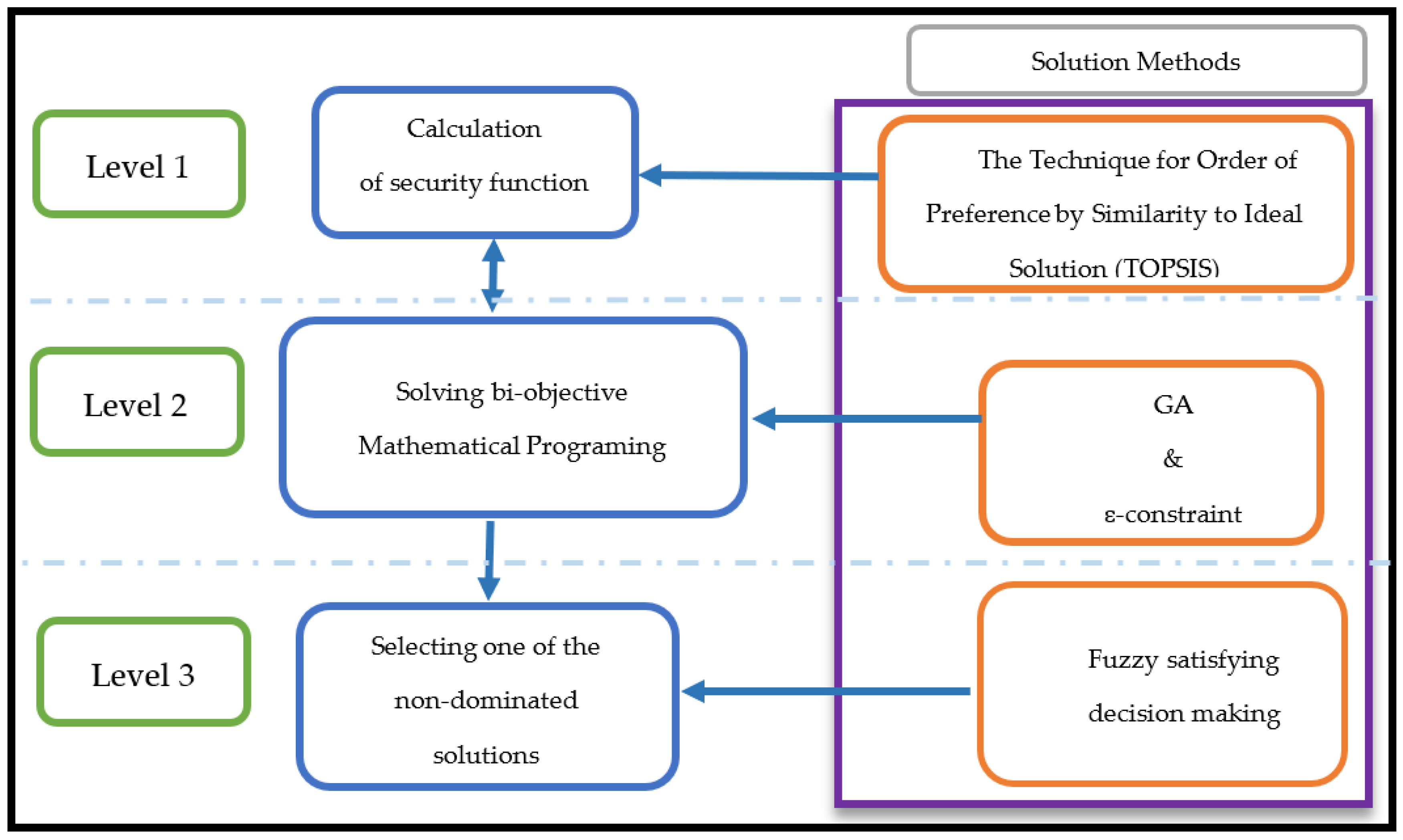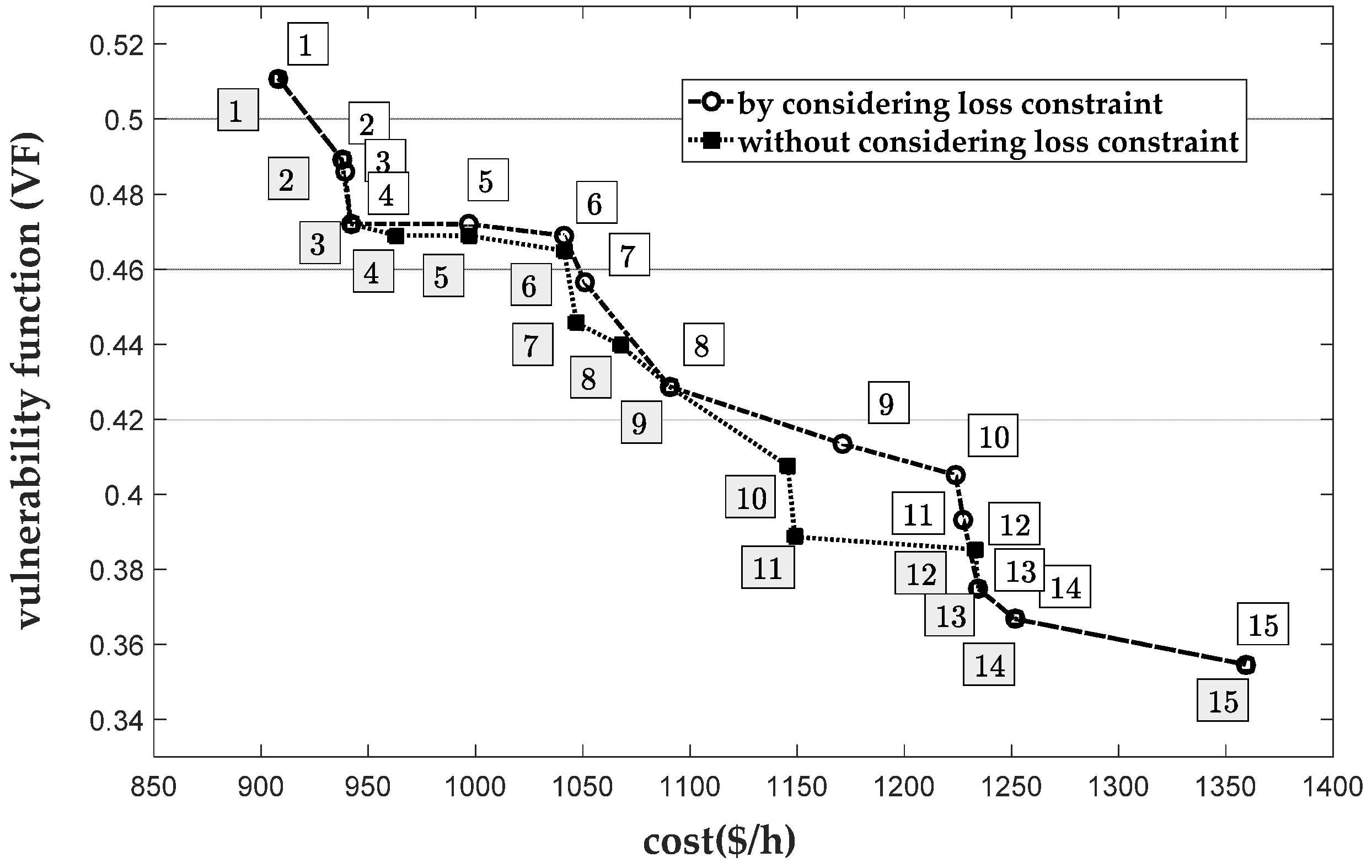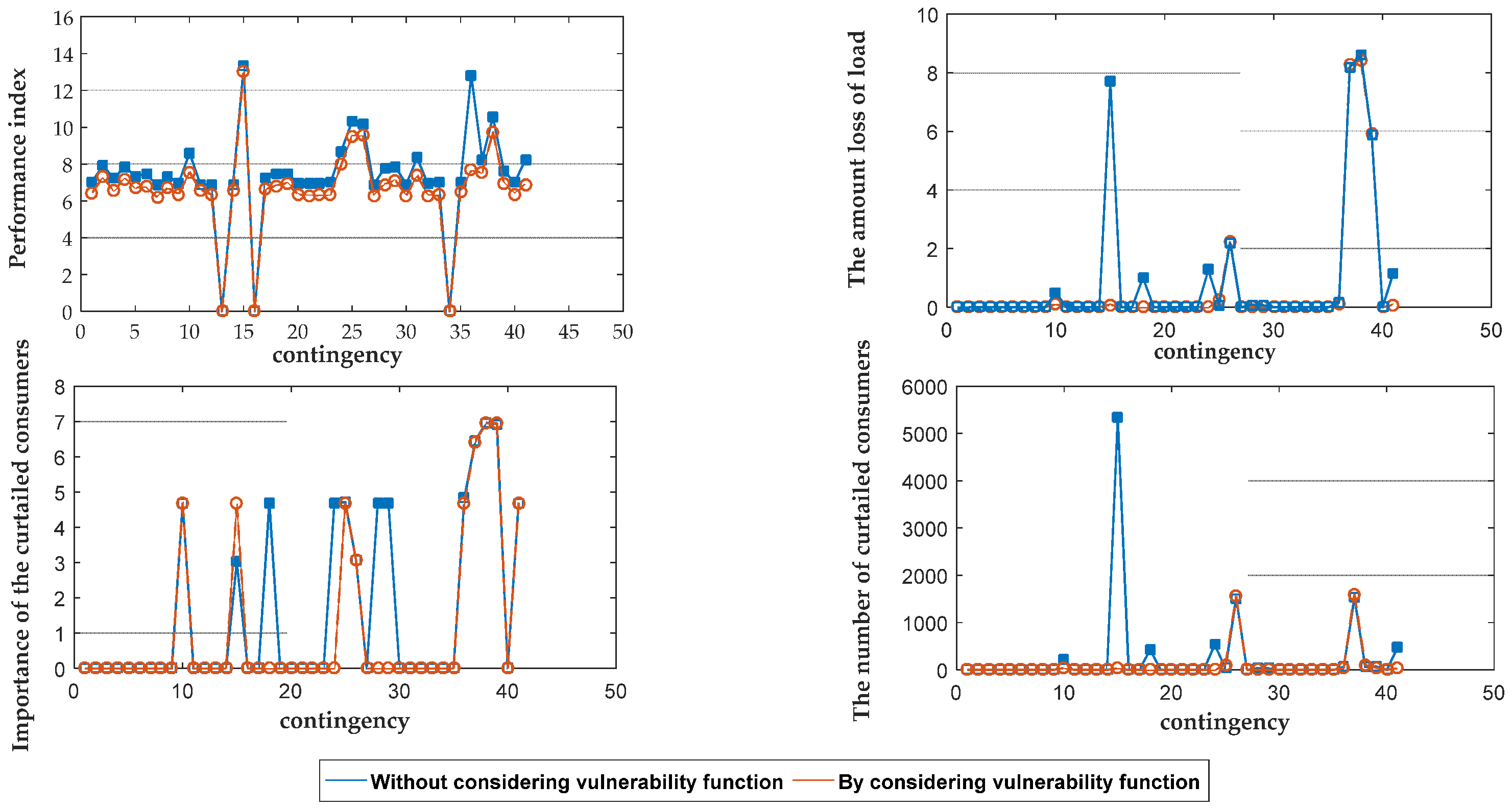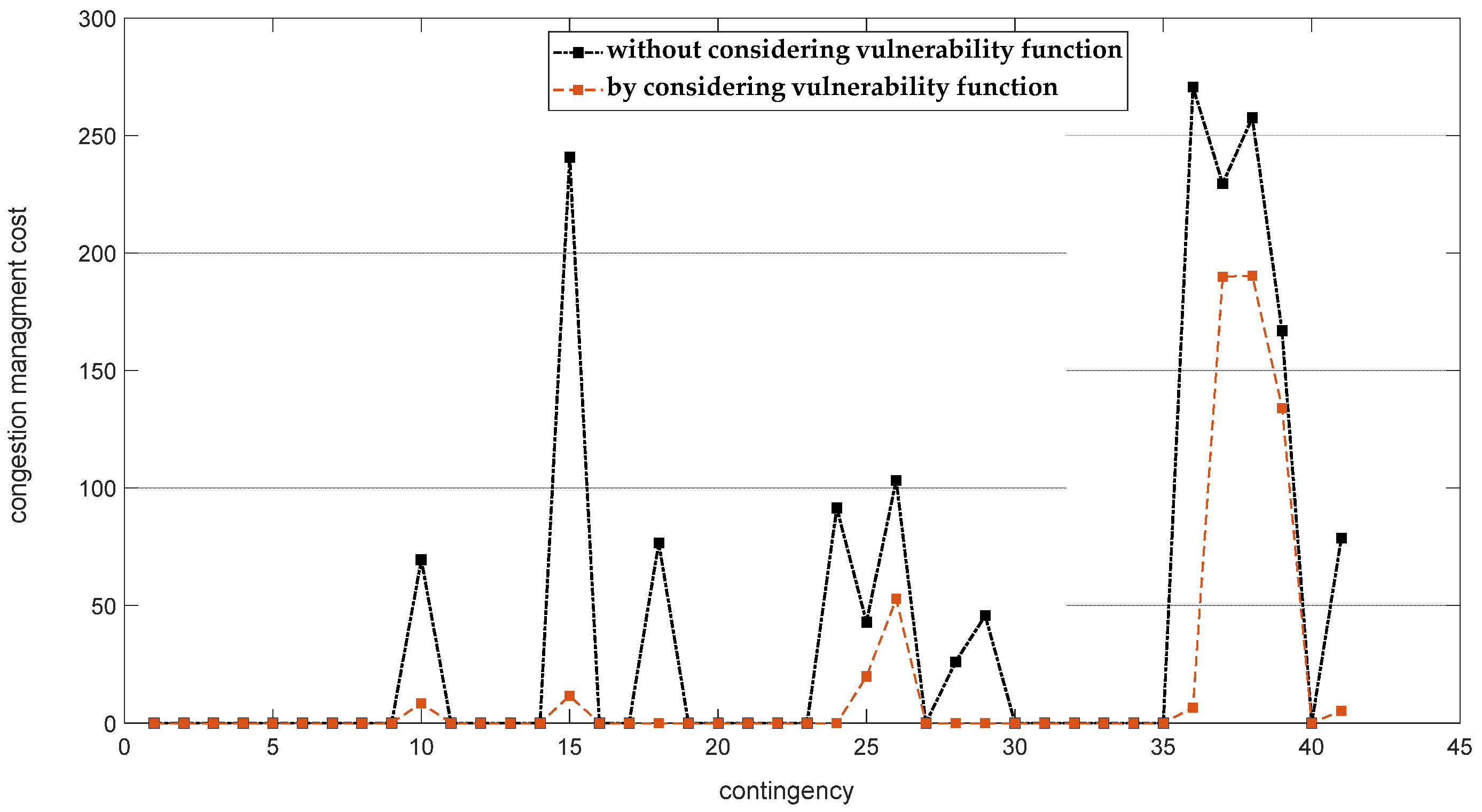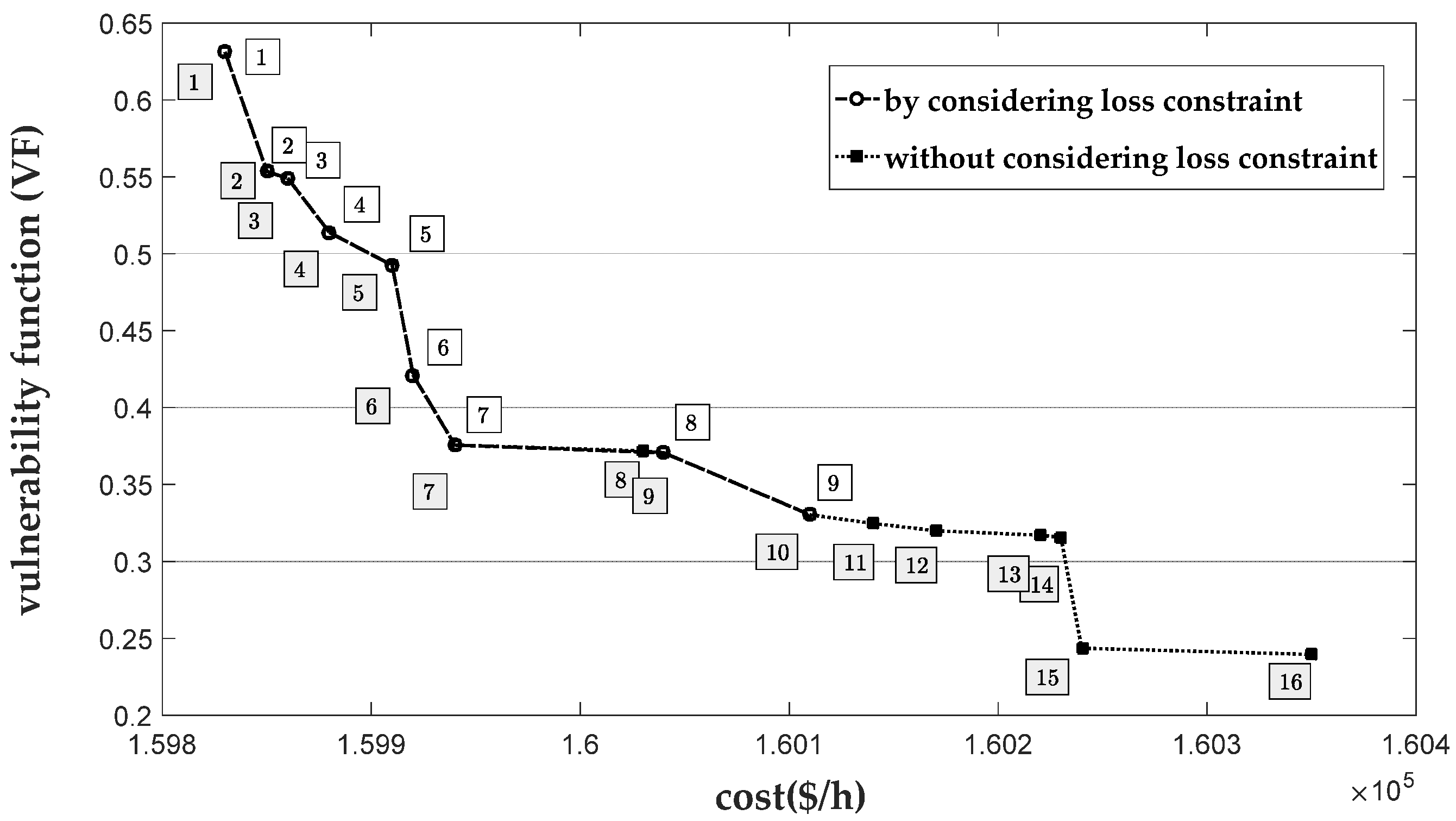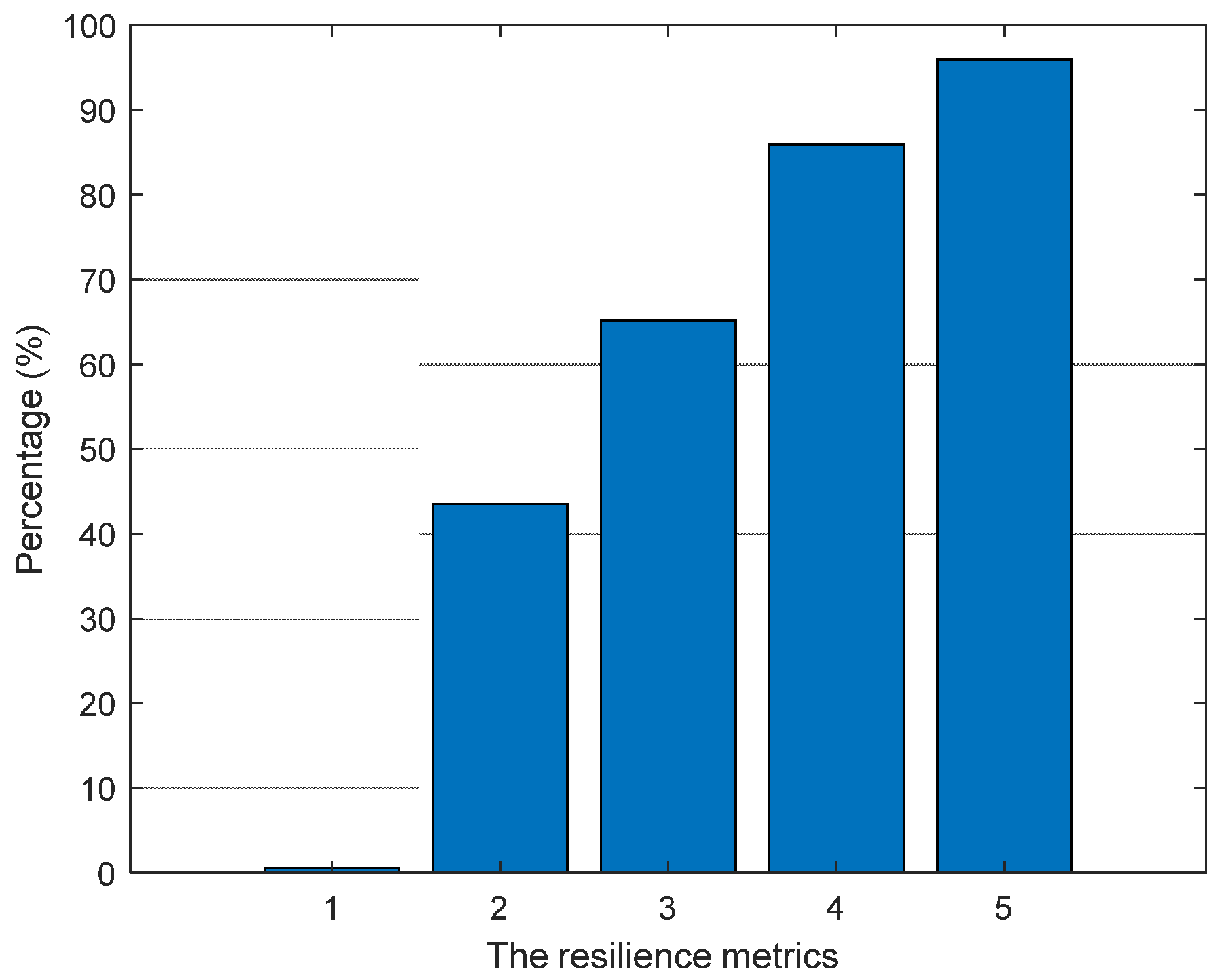1.1. Motivation and Background
Resiliency is generally defined as the strength of a power system in front of high-impact, low-probability, sudden events which lead to component outage [
1,
2]. These huge outages might affect several consumers and the related costs might be high. The Lawrence Berkeley National Laboratory has designed a free website for estimating interruption costs in different U.S. states [
3]. In recent years, extreme weather-related events have increased due to climate change, and these events can decrease the resiliency of different civilized structures [
3].
The most widely spread manmade systems, transmission and distribution assets are generally highly likely to be exposed to climate disasters. Besides climate change, an increase in electricity demand, competition of electricity market players for increased profit, and less concern for power system security and reliability constraints and the increasing penetration of renewable energy with high intermittency increases the degree of vulnerability of power systems while faced with weather disasters. Since 2002, 80% of major power outages in the U.S. have occurred due to weather events [
3], with severe consequences. Weather disasters could affect the number of interruptions not only in transmission systems, but also in the distribution level [
4].
In order to reduce the impacts of such events, it is crucial to develop resiliency-oriented power systems plans to reinforce the network against disasters’ consequences. Improving resiliency is shown by a set of metrics such as the number of consumers affected by an interruption, etc. Besides this, the importance of the interrupted consumers might be considered as a resilience metric. The planner might give a different importance degree to each of the metrics. It is necessary to develop an effective planning framework to be able to simultaneously consider all metrics by paying attention to the degree of importance planners give to different metrics.
1.2. Relevant Background
Numerous efforts have been made to incorporate resiliency in power systems. Generally, the developed resiliency-oriented methods have focused on cyber or physical aspects of power systems. In Ref. [
5], seven groups have been mentioned for cyber-physical attacks based on the end goal of attackers. These groups include bad measurement, bad command injection, control center impersonation attack, communication delay attack, unresponsive command attack, denial of services attack, and coordinated cyber-attack [
5]. All such attacks could threaten power systems in all levels of operation. In this regard, some of the papers improved resiliency near to end-user consumers in micro grids or distribution networks and the rest focused on transmission-network resiliency enhancement. While facing the natural disaster, a few preventive and corrective actions can be performed [
1]. Hardening of the system by expanding new generation units, transmission components, and lines are suggested as effective preventive actions. It has been customary, even in traditional power systems, to locate new transmission, generation, and flexible AC transmission system (FACTS) devices to meet future demands or for improving reliability. However, by emphasizing sustainability in modern power systems, Sedzero has shown that resiliency consideration is also essential [
6].
On the other hand, apart from resiliency-oriented studies, FACTS devices have been extensively applied for power flow control by taking advantage of recent power electronics progress and FACTS devices oriented studies in literature. Different objectives have been considered for FACTS placement, such as stability improvement, voltage deviation reduction [
7], voltage unbalance improvement [
8], loss minimization [
9], congestion reduction [
10], and high renewable penetration enabling [
11].
From the viewpoint of security enhancement, a few studies considered the potential of FACTS devices. In [
12], a continuously variable series reactor (CVSR) was applied for improvement of transmission expansion planning while satisfying
contingences. In Ref. [
13], static security was improved by the optimal allocation of thyristor-controlled phase shifting transformer (TCPST) and thyristor-controlled series compensation (TCSC) devices. In [
14], operational cost in contingencies was considered in FACTS placement. In [
15], compensation payment to market participants due to generation re-scheduling and load shedding was considered together with the placement of the FACTS devices. Recently, the effectiveness of the application of FACTS devices for resiliency enhancement was demonstrated in [
16]. In Ref. [
17], FACTS placement was done based on vulnerability indices. The used vulnerability indices are extracted from the security margin indices. However, the indices are not comprehensive enough to consider the number and importance of curtailed consumers, the amount of load loss, and congestion management cost. Overall load shedding and the duration due to network outages were considered as the resiliency metric in [
16].
In the above papers and other papers on FACTS placement and/or power systems planning that could not all be mentioned here, different resiliency-based congestion-driven indices such as the number and importance of curtailed consumers, the amount of load loss, congestion management cost, and performance index have not been simultaneously considered in the assessment of contingencies. On the other hand, the developed models are not capable enough to consider different types of resilience metrics without imposing further computational burden.
The scenario degree of severity (DOS) concept established based on the Technique for Order of Preference by Similarity to Ideal Solution (TOPSIS), a well-known multi-criteria decision making approach, has been shown in previous literature [
18,
19] that is capable enough to handle different metrics by considering the decision makers’ viewpoint. TOPSIS is a multi-criteria decision making approach that the chosen alternative should have the shortest geometric distance from the positive ideal solution (PIS) and the longest geometric distance from the negative ideal solution (NIS). One of the earliest works in this topic is developed by Lai and Hwang [
20]. More information about TOPSIS is referred to [
19]. In [
18], DOS was used for selecting the most-secure operating point from a set of the Pareto optimal fronts in a multi-objective transmission congestion management framework. Also, in [
19], DOS was used for making security-dependent decisions for the assessment of a proposed power generation plan. The application of multi-objective optimization in power systems is referred to [
21]. Also, the impacts of contingencies on power system stability are referred to in [
22].
It is very promising to use the DOS concept for proposing an effective mechanism to include resiliency in the power system planning approach.
According to the understanding gained from the above literature, FACTS devices placement could be an effective case study for applying the proposed method.


